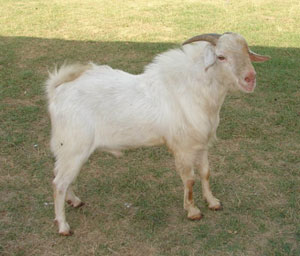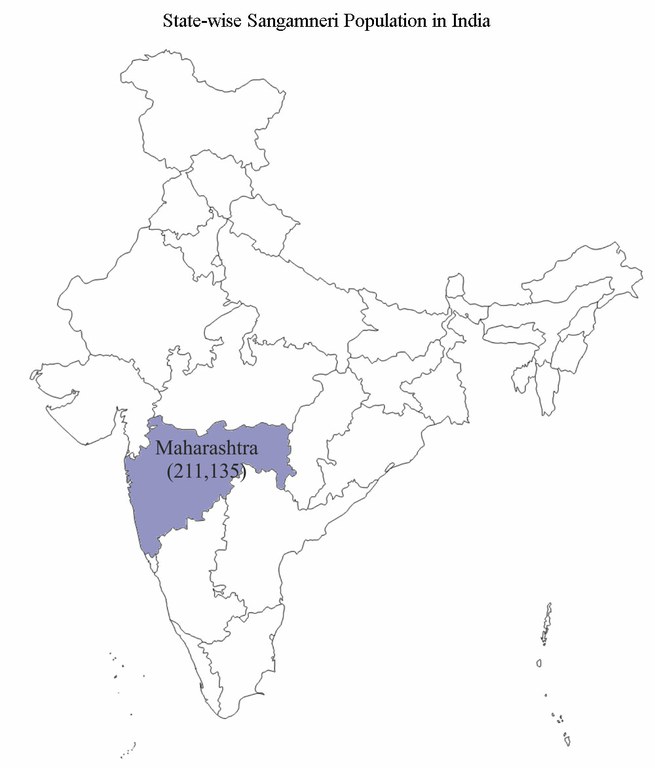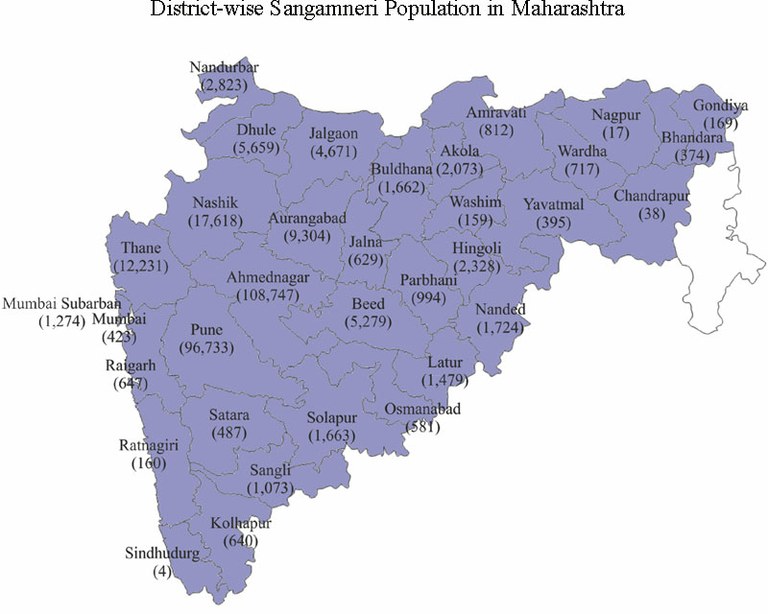Sangamneri
Feb 21, 2013
The semi arid region of Maharashtra comprising of Nasik, Ahmednagar and Pune districts forms the native habitat of the Sangamneri goat breed.

The breed derives its name from the Sangamner Tehsil of Ahmednagar District. They are medium-sized animals. The coat is completely white with mixtures of black and brown. Ears are long and drooping. Both sexes have horns directed backward and upward. The litter size is mainly single however 15 – 20% goats show twinning whereas triplets are rare.
The average daily milk yield varies between 0.5 to 1.0 kg with an average lactation length of about 160 days. Although this breed is reared mainly for meat, some animals show a good milch potential. Dressing percentage1 is about 41% at 6 months, 45% at 9 months and 46% at 12 months of age. According to the 18th Livestock Census 2007, the number of Sangamneri goats in the country is 211,135.
| Adult Male | Adult Female | |
|---|---|---|
| Average Body weight (kg) | 39 to 42 | 32 to 34 |
| Average Body length (cm) | 73 to 75 | 68 |
| Average Height at withers (cm) | 74 to 76 | 69 |
| Average Chest girth (cm) | 73 to 76 | 73 |


Photo source: CSWRI and http://agtr.ilri.cgiar.org/index.php?option=com_joomgallery&func=detail&id=171&Itemid=230
Reference:
- Dressing percentage is one of the many factors affecting the value of a slaughter animal. Dressing percentage is calculated by dividing the carcass weight by the live weight of an animal and expressing the result as a percentage. For example suppose an animal delivered to a slaughter house weighs 50 Kg. After slaughtering, the hide, head, feet and gut are removed. The carcass then weighs 27 kg. The dressing percentage of this animal would then be 27 divided by 50 multiplied by 100 i.e. 54 percent. This 54 percent represents the meat and skeletal portion of an animal compared to its live weight. The animal is weighed after transportation to the slaughter house so live weight is ‘shrunk’ weight. Further, the carcass is weighed warm as opposed to cold. The dressing percentage for a cold carcass can be 2% lower than the warm carcass dressing percentage for the same carcass. Generally, the dressing percentage of goats is around 50%. As an animal grows, the percentage of fat in the carcass tends to increase, the percentage of bone tends to decrease whereas the percentage of lean muscle stays about the same. The portions of the carcass with the largest muscle mass are the leg and the shoulder. Percentage wise, these portions tend to decrease as the animal grows.









